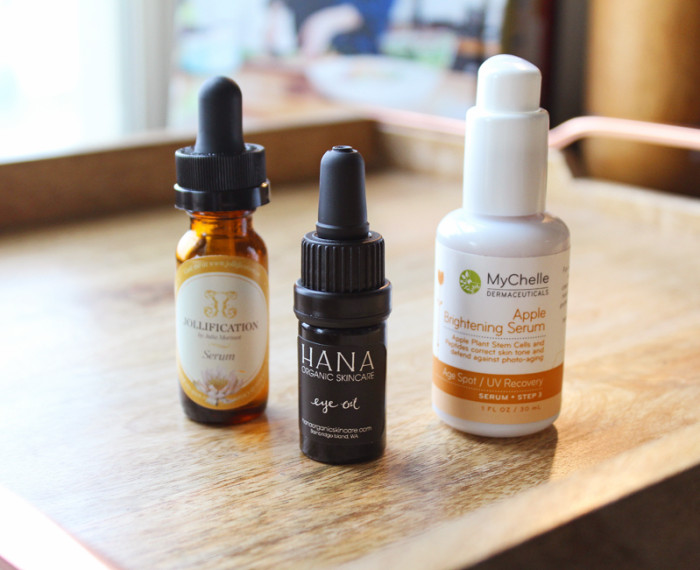Most of us experience some form of hyperpigmentation, whether it’s from sun damage (in the form of age spots), acne scars (those purplish marks that take forever to fade!), or other damage to the surface of the skin. More technically speaking, hyperpigmentation occurs when an excess of melanin (the pigment that colors our skin) is deposited in a particular area.
While acid peels are effective as fast-acting treatments for fading hyperpigmentation or brightening dull skin, they may not be your first choice if you have sensitive or reactive skin. Rather, a daily skincare routine that includes mild exfoliation, a brightening serum, and a moisturizing, non-comedogenic oil may help improve your skin’s clarity and tone over time. Although daily, gentle products will work more slowly than a peel—it may be up to a month before you notice results—you’re far less likely to experience reddened, flaky skin when you follow a non-abrasive regimen.
Mild Exfoliation
Put down the scrubs. Abrasive exfoliants—like natural scrubs—may do more harm than good if your skin is sensitive. Instead, a soft, damp wash cloth or konjac sponge will help slough off dead skin cells to reveal a softer, more even complexion. Alternatively, a sonic cleansing device will also serve this purpose—just be sure to use the gentlest settings if you’re planning on using the device on a daily basis. My favorite is the FOREO Luna for combination skin.
Because mild exfoliation helps remove dead skin cells, it preps your skin to more fully absorb any treatment and moisturizer you apply after cleansing, which brings us to…
Gentle Brightening Serum
After cleansing your skin and gently patting dry, apply a brightening serum designed for daily use. I personally like MyChelle Apple Brightening Serum. It employs alpha hydroxy acids (like malic acid) to help improve the texture and tone of skin, reduce the appearance of fine lines, and unclog pores. Alpha hydroxy acids also deeply penetrate the skin and boost collagen production in the dermis, which sits below the epidermis. Meanwhile, gallic acid helps prevents oxidative damage to cells—so not only does the serum work to reduce the appearance hyperpigmentation, it also help prevent further damage to the skin.
Conditioning, Non-Comedogenic Oil
A moisturizer can help keep skin supple and soft, while protecting it from damaging elements that may lead to dryness and further discoloration.
Rosehip seed oil is a Peaceful Dumpling favorite for moisturizing skin without causing breakouts, balancing sebum (oil) production, and improving the general glow of skin. Because rosehip seed oil contains naturally-occurring vitamin A, it encourages cell turnover (which gradually reduces the appearances of dark spots) when used regularly over a period of time. Think of it as a natural, gentler alternative to a retinol serum.
Try Hana Organic Skincare Eye Oil or Jollification Face Serum.
Preventative Measures
Integrating SPF and other protective measures with your daily skincare regimen will help lessen the occurrence of future hyperpigmentation. Remember that sun damage causes inflammation, so anything that counters inflammation is your friends. This includes antioxidants—those that we apply topically and those that we consume via our food. In fact, a healthy, plant-rich diet will go a long way in improving the appearance of your complexion and promoting efficient healing. When coupled with a healthy diet, regular exercise, which boosts circulation and tissue regeneration, will help your skin looks its best.
Do you have any effective hyperpigmentation treatment or prevention tips?
Also see: The Difference Between Acne Scars and Hyperpigmentation
Using Thanaka for Acne and Uneven Tone
Get more like this–sign up for our newsletter for exclusive inspirational content!
Photo: Mary Hood Luttrell





